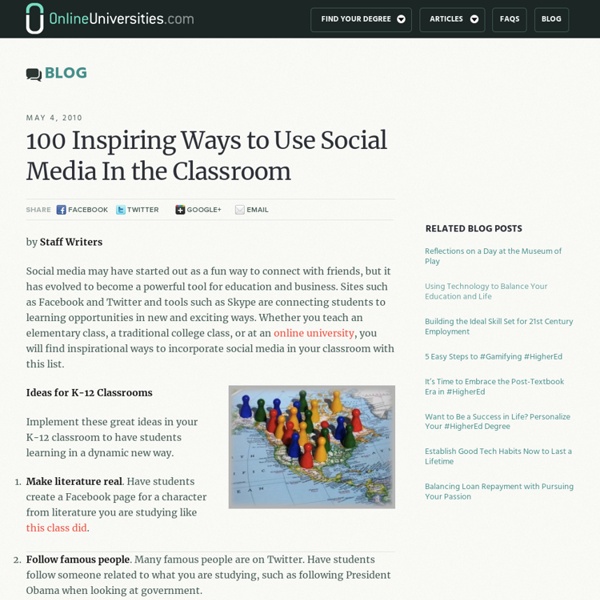Academic Courses From Leading Universities
Education Eye - Mapping Innovations
News
Lieber Besucher, die von Ihnen aufgerufene Webseite ist ab sofort Bestandteil von Springer für Professionals. Was ist Springer für Professionals? www.springerprofessional.de enthält die entscheidenden Inhalte aus den Bereichen Wirtschaft und Technik für Ihre tägliche Arbeit: Digitale Fachbibliothek: Zugriff auf über 1 Mio. qualitätsgeprüfte Dokumente, Fachbücher und Fachzeitschriften aus renommierten FachverlagenThemen-Scout: Selektion, Komprimierung und Verknüpfung relevanter Themen durch FachredaktionenKnowledge-Manager: Tools zur persönlichen Wissensorganisation und Vernetzung Weitere Informationen sowie einen kostenlosen Testzugang finden Sie unter www.entschieden-intelligenter.de. Hinweis für Abonnenten von Springer-Fachzeitschriften Auch auf Springer für Professionals haben Sie Zugriff auf das PDF-Fachartikelarchiv Ihrer Zeitschriften. Falls Sie das volle Leistungsspektrum inkl. Hinweis für Firmenkunden mit IP-Freischaltung Auch die IP-Freischaltungen für Volltexte sind mit umgezogen.
LessonPlanZ.com - Lesson Plans & Lesson Plan Resources for Teach
Digital Citizenship
One of the focuses we continue to address in education is digital citizenship, Internet safety and cyber ethics. “Digital Citizenship is more than just a teaching tool; it is a way to prepare students/technology users for a society full of technology.” (Digital Citizenship, 2010). Many online websites have developed specific resources for teachers, students and parents. The Internet is an exciting tool full of infinite resources, information, education and entertainment. However, students need guidance and direction of how best to appropriately explore the Internet and become responsible, safe digital citizens. Get Web WiseThe Government of Alberta created this website to educate parents, teens and children on Internet safety. Be Web AwareBe Web Aware was developed by the Media Awareness Network, Microsoft Canada and Bell as a national Internet safety program. We’re On To YouThis provincial site is sponsored by Alberta and Children Youth Services. ReferencesDigital Citizenship, (2010).
Weiterbildung: Mit neuer Technik schneller lesen | Karriere
E-Mails, Akten, Berichte: Der durchschnittliche Arbeitnehmer liest drei Stunden täglich. Eine neue Methode verspricht eine deutliche Zeitersparnis: Speed-Reading-Kurse. Speichern Drucken Twitter Facebook Google + Eine Frau arbeitet sich durch mehrere Bücher | © Scott Olson/Getty Images Ein Harry-Potter-Band hat etwa 600 Seiten. Experten schätzen, dass der durchschnittliche Arbeitnehmer täglich drei bis dreieinhalb Stunden mit Lesen verbringt, 70 Prozent unseres Wissens werden so erworben. Anzeige Mittlerweile gibt es viele Anbieter, die mit Namen wie "Turbolesen", "PoweReading", "Improved Reading" oder "Speed Reading" um Kunden werben. Und wie funktioniert diese Lesetechnik? Aber klappt die Technik wirklich? Kritiker warnen vor unseriösen Kurs-Anbietern. (Zuerst erschienen auf Karriere.de)
4 Tips for Integrating Social Media Into the Classroom
A former local newspaper reporter, Tanveer is a student at the Medill School of Journalism learning all things digital and entrepreneurial. He also writes about political figures for WhoRunsGov.com and hopes to own the high score on multiple Ms. Pac-Man machines one day. While kids may rely social networks for personal use, there is a place for them in K-12 education, as well. The fact is, social networks are here to stay, and with or without rules, kids are going to use them. 1. Schools have been understandably cautious in allowing students access to social media sites. For many schools, it is easier to apply broad filters that restrict access to inappropriate sites and social networks alike, allowing for minimal supervision. While dedicated staff should soon, if not already, be a necessity, there are simple ways to monitor access. 2. Weiser also said his district won't open up social networking sites to students unless a curriculum explaining how to use them is in place. 3. 4.
Free Online Seminar - Tweaking Twitter for Tweachers
This site needs a new owner After 4 years of curating on this blog I am giving my fingers a rest – permanently. I have decided to go on to something new. I don’t know what yet, but as a lifetime learner I’m sure there is lots of exciting stuff out there for me in my “retirement”. So if anyone would […] eLearning News 13 Apr 2014 Round up of the news this week: Upside Learning celebrates 10th anniversary – Training Press … Wed, 09 Apr 2014 14:16:03 GMT Upside Learning, a leading provider of learning technology solutions, announced today that April 2014 marks the company’s 10 year anniversary of its founding. The Rising Power of MOOCs: Now, everyone can learn at Harvard (or Yale, or…)
HootCourse
A Teacher’s Guide to Twitter « Once a Teacher….
Twitter is apart of my life almost every day because: - It’s a great source of news. - There are rich conversations among educators and edtech people. - People post entertaining, interesting, and very useful links. - I enjoy the easy interaction with others from around the world. Most people start off in a rocky relationship with Twitter. It doesn’t seem to be as easy or as useful as everyone has said, it takes awhile before you find your niche, and there is an overwhelming amount of information to deal with. But, just hang on – it’ll be worth it!!! Getting Started Your picture: you should definitely have some sort of picture – people seem to respond better to actual photos, but avatars, cartoons, or logos are fine, too.Your bio: it is very helpful to include keywords here because often, when someone is deciding whether to follow you or not, this is where they’ll get their “first impression” of you. Managing your Life on Twitter Finding People to Follow Not Getting Overwhelmed Tweeting
Quizinator for Teachers, Instructors, and HomeSchoolers
Intervention Central | Home



